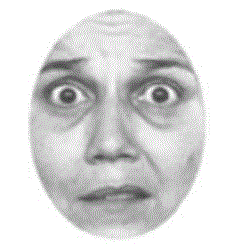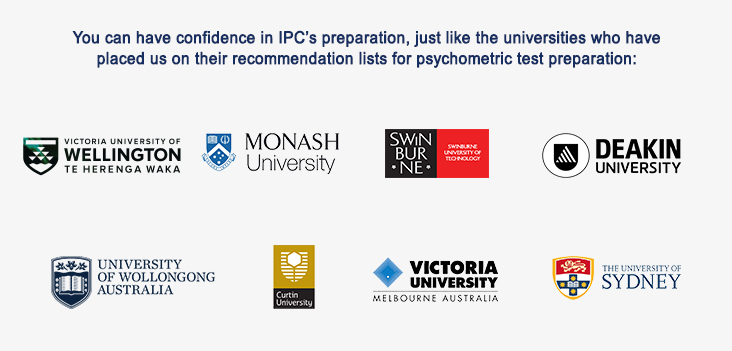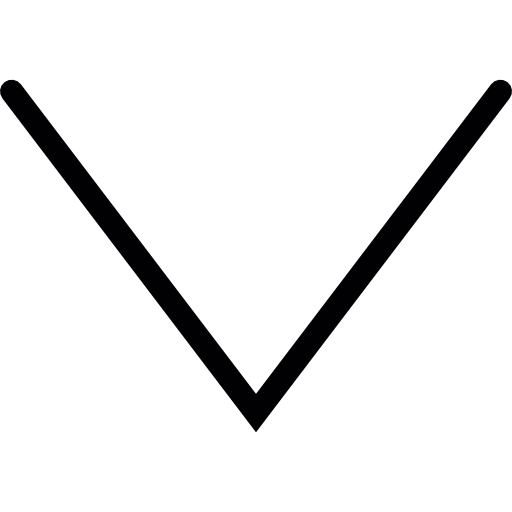Tailored preparation for Criteria tests - Practice Criteria Tests
Find out how the Institute of Psychometric Coaching effectively prepares through tailored practice tests, online courses and one-on-one coaching for your psychometric, aptitude and personality tests developed by Criteria(formerly known as Revelian).
About Criteria
Criteria is a US based company that acquired Revelian, which was a Brisbane based psychometric test developer that provided online psychometric testing services to the local and Asian markets. This allowed Criteria to offer psychometric tests to the US, Australia, New Zealand and other Asian markets.
1. Criteria's Cognitive Ability Test (CCAT)
Criteria's Cognitive Ability Test is the preferred psychometric test used by employers in large companies needing to screen potential candidates. The Criteria Cognitive Ability Test is a timed test that includes 50 test questions and needs to be completed in 15 Minutes. The Criteria Cognitive Ability Test questions are grouped into 4 different sets of questions measuring 4 types of intelligence:
- A set of verbal test questions.
- A set of numerical test questions.
- A set of abstract test questions.
- A set of error checking test questions.
Criteria Cognitive Ability Test (CCAT) - verbal set of test questions:
The set of verbal test questions in the CCAT test are designed to measure your verbal reasoning ability. The set of test questions include several verbal test question types: deductive reasoning, word associations, odd one out and logical thinking.
Let's check the following verbal test question examples:
Example question 1:
Which two statements together prove that Tim has a red car?
A. Gil likes Tim's car colour
B. Tim likes fast cars
C. Gil has a fast car
D. Gil likes only red cars
E. Tim's car is not silver
Example question 2:
Which are the two odd-ones out?
A. Borrow
B. Trade
C. Sell
D. Rent
E. Loan
F. Lease
Criteria Cognitive Ability Test CCAT - numerical set of test questions
The numerical section of the Criteria Cognitive Ability Test includes several numerical question types: traditional number series, graphs and tables, basic arithmetic, formula based numerical questions and basic quantitative questions.
Let's check the following CCAT numerical test questions examples:
Example numerical CCAT test question 1:
Tom has been flying his small jet for 30 minutes and has travelled 200 Kilometres. What has been his average speed in Kilometres per hour?
To answer this question, we need to first change the time Tom has been flying from minutes to hours. As there are 60 minutes in an hour, 30 minutes equals 0.5 hours. Then, we need to divide the distance by time to find the speed in which Tom was flying. 200km/0.5 hours = 400 km per hour.
Example numerical CCAT test question 2:
Each dough machine at Paula’s Bakehouse can make 2 large dough batches in an hour. She has 3 of these machines. How many batches of dough can Paula make in 6 hours?
To solve this question, we need to calculate how much can each machine make in one hour and multiply this by 3 machines and by 6 hours. If one machine can make 2 batches in one hour then, 3 machines can make 3 x 2 batches = 6 batches per hour. Then, in 6 hours the 3 machines can make 6 x 6 batches per hour = 36 batches in 6 hours.
Example numerical CCAT test question 3:
44 out of 400 is what percent?
To solve this question, we need to understand percentage. A percentage means how many times can a section fit into a whole. If the whole is 400 and the section is 44 then, (44/400) x 100 will be 44 out of 400 in percentage.
Example numerical CCAT test question 4:
Wat is the smallest value out of the following numbers?
0.0012
0.0015
0.0101
0.0122
To answer this question, we need to evaluate all the numbers. The first rule is that if the number has a decimal point then as the number has more zeros on the right side of the decimal point the value of this number is smaller. Therefore, we can see that 0.0012 and 0.0015 are smaller than 0.0101 and 0.0122 simply due to the number of zeros to the right of the decimal point. Then, as 12 is smaller than 15, 0.0012 is smaller than 0.0015.
Example numerical CCAT test question 5:
What is the next number is this series: 1, 4, 9, 16, 25, ?
To answer this question, we need to find a pattern that fits the sequence of numbers. In this case the pattern is +3, +5, +7, +9,,,. Therefore, the next number will be 25 + 11 = 36.
Criteria Cognitive Ability Test CCAT - abstract set of test questions
This set of test questions are designed to measure your abstract reasoning ability. In this type of test questions you are presented with a group of shapes or items. You will need to quickly identify the pattern or patterns across all shapes in order to answer the question. This section includes several test question types: find the next shape, find the missing shape, find the association, find the odd one out.
Let's review the following example, here we can see a group of shapes. Your task is to find wWhich of the shapes doesn’t belong with the others.

To answer this question we need to find the patterns or logical rules that make up this list of shapes going from left to right. When reviewing the three shapes we can identify the following patterns:
1. Each shape has a half white and half black inner shapes.
2. The black and white inner shapes are mirror image..
3. There is a stick or pole coming out from the centre or point of connection between the black and white inner shapes.
As the odd-one-out is a shape that does not incorporate all three patterns, the first shape is the odd-one-out.
Criteria Cognitive Ability Test (CCAT) - error checking set of test questions
This set of test questions has been designed to measure your ability to pay attention to details. Each test question will introduce 2 similar lists of information. The two lists of written items will be similar but not identical. They will have small differences in letters or signs. You will be asked to identify how many items on both lists are identical.
Let's review the following test question example:
How many items on both lists are identical?
McDowell Corp. McDowel Corp.
Finickers Fish ‘n’ Chips Finichers Fish ‘n’ Chips
Eastern Star Co-Op Eastern Star Co-Op
Carthagie Cricket Team Carthagie Cricket Team
Minnie’s Ice Creamry Minnies Ice Creamery
To answer ths question, you need to compare the details f the two lists. The first pair of items has a mistake. There are two l’s in the first ‘McDowell’ and only one in the second. The second pair has ‘Finickers’ in the first column with a ‘ck’ and in the second with a ‘ch’. The third and fourth entries are identical but the last entry has ‘Creamry’ vs ‘Creamery’, there’s an ‘e’ missing. The correct answer is 2.
In our Practice Criteria Cognitive Ability Test questions you will receive detailed answer explanations to allow you to solve similar test questions in your real Crietria Cognitive Ability test CCAT.
2. Criteria verbal reasoning test
The Criteria verbal reasoning test includes 35 verbal questions and allows candidates 10 minutes to complete the entire test. This test has only verbal test questions. Criteria's verbal reasoning test questions are designed to measure your ability to identify words that do not belong to a group or find word associations or logical thinking.
3. Criteria numerical reasoning test
The Criteria numerical reasoning test includes 25 questions and allows candidates 12 minutes to complete the entire test. This test has only numerical test questions.Criteria's numerical reasoning test questions include traditional number series, and time, speed, distance type of test questions.
4. Criteria abstract reasoning test
The Criteria numerical reasoning test includes 32 questions and allows candidates 10 minutes to complete the entire test. Criteria's abstract reasoning test questions are non-verbal and include groups of shapes. Each group has one or more logical rules and patterns that identify the as a group of shapes. Once you found the logical rules and patterns then you will need to use them to find the odd ones out or the missing shape.
5. Criteria's Cognify test
The Cognify Test is a game based type of psychometric testing. Each test is timed and looks like a basic video game.
The Cognify test moves away from the question/answer based style of standard psychometric tests. Instead, it uses game based tests to measure your abstract, verbal and numerical reasoning. This means that you no longer have a series of questions on the screen andno calculator or paper pad is necessary.
You are expected to follow the instructions carefully as you start each test or game.
5.1 The theory behind the Cognify Test
The Cognify Test model is based on the Cattell-Horn-Carroll theory of the structure of human cognitive abilities.
The theory combines concepts like fluid and crystallised intelligence and the three-stratum model of intelligence. It has aided the evolution of the psychometric approach in understanding human cognitive characteristics by employing advanced statistical techniques like factor analysis.
5.2 What to expect in the Cognify 6 mini tests
The Cognify Test measures three components about your cognitive abilities:
- 1. Problem Solving:
In problem solving the test assesses your ability to quickly learn, adapt and solve problems.
This measures your ‘fluid intelligence:’ the ability to see a problem for the first time and find out how to solve it without any prior knowledge.
- 2. Numerical Reasoning:
In numerical reasoning the test assesses your ability to understand numerical concepts, work with numbers and use formulas to solve problems.
- 3. Verbal Knowledge
In verbal knowledge the test measures your knowledge of the English language – focusing on spelling, grammar and identification of errors in text.
Timer
Each of the tests in the Cognify set of games is timed at 4 or 5 minutes.
5.3 What to expect in Cognify's problem solving mini tests:
The Cognify Test has three mini tests measuring your problem solving skills:
- Gridlock
- Resemble
- Short Cuts
The ‘Gridlock’ test
In this mini test you need to solve a number of consecutive grid based puzzle games as quickly as you can.
There is generally a central grid and you have to fit the given figures in (rotate, drag and drop) to complete the grid.
The ‘Resemble’ test
In this mini test you will be presented with a figure in the left section and generally a simple ‘angle of rotation’ value given beneath it, for example: 180o or 90o.
All you have to do is mentally rotate the figure on the left by the angle indicated and recreate the resultant figure in a central grid on the right.
The ‘Short Cuts’ test
In this mini test you are asked to move a particular ball and move it to a destination indicated by stars. You are supposed to move the target ball to the destination using the fewest moves as quickly as possible.
5.4 What to expect in Cognify's numerical ability mini tests:
The Cognify Test has two mini tests measuring your numerical ability:
- Numbubbles
- Tally Up
What to expect in the ‘Numbubbles’ test
This mini test displays a target number and a number of bubbles with simple equations.
Your task is to identify the bubbles containing an answer equal to the target value displayed.
What to expect in the ‘Tally Up’ test
This mini test displays two sections with numbers (appearing as tokens) in each frame. Your task is to decide which frame has a higher value of numbers (tokens) or both frames might be of equal value.
5.5 What to expect in Cognify's verbal knowledge mini tests:
In the Cognify Test you will have two mini tests measuring your verbal knowledge:
- Proof It
- Pop Up
What to expect in Proof It test
In this mini test you are presented with series of texts that include grammatical errors such as punctuation errors, missing words, misspelled words and grammatical errors.
Your task is to identify all grammatical errors in each text in 1 minute.
6. Criteria's Emotify - emotional intelligence test
Emotify is a new Emotional Intelligence test developed by Criteria to measure two aspects of Emotional Intelligence.
6.1 What is the Emotify Emotional Intelligence test?
The Emotify test was developed by Criteria as a reasoning measurement of people’s emotional intelligence using 2 distinctive aspects of your emotional intelligence.
- Ability to identify emotions in facial expressions
- Ability to identify people's emotions based on their behaviour
Emotify includes 2 parts:
Part 1 measures your ability to identify people's emotions based on a scenario or situation. Following each scenario, you will need to identify the correct emotion by selecting the face that demonstrates the correct emotion.
Part 1 has 3 sections with a break in between each section. Each section is timed and you are given 1 minutes to complete each page. Once the timer elapses the test moves you to the next page. Each page has one or two parts of a scenario.
Part 2 measures your ability to identify emotions on people's faces. You are given 30 faces. You need to identify the emotion expressed on each face and you have only 3 seconds for each face.
The Emotify has in total 20 questions in part 1 and 30 questions in part 2.
6.2 The difference between Emotify and other EI tests
Contrary to most Emotional Intelligence tests used in the market, Criteria developed a reasoning rather than a personality based test. This means that the Emotify regards EI as a cognitive ability and therefore uses a timer as part of the test.
What is an Emotify Emotional Intelligence test question?
The Emotify test has two types of test questions:
The first type or Emotify test question style includes a short scenario that describes a situation about one or two people. Then you are asked to decide what is each person in the scenario likely to feel. Your answer will not only include the emotion but also the facial expression that conveys the correct emotion.
The second type or Emotify test question style includes a screenshot of a face and you are asked to decide whether this facial expression conveys a specific emotion. Your answer can only be yes or no.
Let's review the following example test question for the Emotify test:

Is this Contempt?
Here you need to analyse the facial expression to identify the correct emotion.
6.3 The Challenge with the Emotify test:
Many job applicants find the Emotify test very challenging due to the following reasons:
- The Emotify's timer is very short. This makes it very difficult for test takers to consider all the options before the time runs out.
- The test questions are very different from what people are used to.
- The test questions require people to deal with things outside their comfort zone.
7. Criteria's Personality Tests
Criteria has designed several Personality Tests which are used by employers to assess job candidates’ behavioural style. The most popular tests are:
Criteria Behavioural Profile (OBP) which has 24 test questions and is untimed
16 Personality Factors Questionnaire (16PF) which has 170 test questions and is untimed.
Let's check the following test question example:
I prefer playing tennis than basketball?
A. Strongly disagree
B. Disagree
C. Neutral
D. Agree
H. Strongly agree
This test question measures in a covert manner your social skills and your ability to work well in a team.
In your practice Criteria personality test you will receive detailed answer explanations to allow you to understand what each question measures and how to answer so you can emphasize your strengths.
Which companies use Criteria's cognitive and personality tests?
Criteria is a leading psychometric test provider and has an impressive client list of companies such as: Federal Police, Deloitte, NSW Government, BMW, AURIZON (Queensland Rail), Telstra, Chandler McLeod, Vilage, Energy Australia, Pepsico, Thiess, Dan & Bradstreet.
Please note that most companies tend to have more than one psychometric test provider.
Practise and preparation for your Criteria Cognitive Ability test (CCAT), Cognify mini tests, Criteria's verbal reasoning test, Criteria's numerical reasoning test, Criteria's abstract reasoning test, Emotify and Criteria's Personality Test
The Institute of Psychometric Coaching offers online and tailored practise tests and preparation solutions to ensure that you are ready to take your test with Criteria:
- Practise online tests to get ready for Criteria's Cognitiv Ability test, Verbal test, Numerical test and Abstract test with timers and detailed answer explanations at the end oof each practice test.
- Practice for Criteria's Cognify mini tests with timers and detailed answer explanations at the end of each mini test.
- Practice for Criteria's Emotify timed test with timers and detailed answer explanations at the end of each part.
- Practise online Personality Tests to prepare you for the Work Safety test, Work Reliability test and personality tests
- Fully tailored online cognitive and personality test courses
- 1-on-1 coaching sessions delivered by experienced psychometricians and psychometric test trainers
- Try our practise online tests and preparation solutions for your cognitive and personality tests developed by Criteria to ensure you demonstrate your true capability.
Please note: Criteria, CCAT, Cognify, Emotify and other trademarks are the property of their trademark holders. None of the trademark holders are affiliated with the Institute of Psychometric Coaching or this site.









